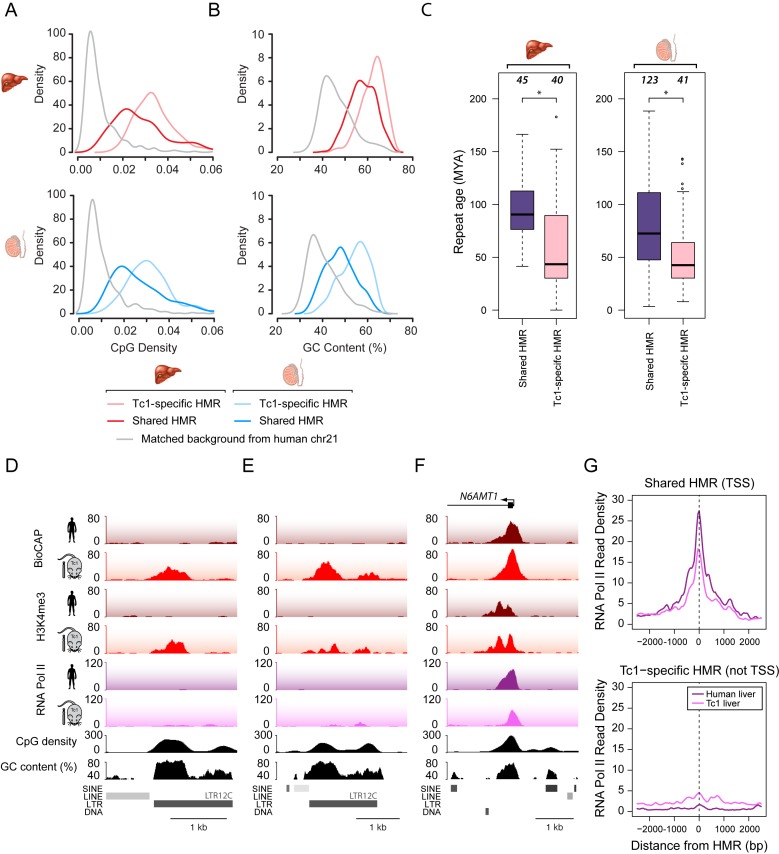Figure 4.
Tc1-specific HMRs are CpG-rich and often associated with young repetitive DNA elements. (A and B) CpG density (A) and GC content (B) plots of liver (upper panel, red) and testis (lower panel, blue) HMRs that are shared between human and Tc1 mouse (dark line) or are Tc1-specific (pale line). A background control is indicated (grey). (C) Boxplots depicting age of repeats (in million years) associated with HMRs in liver (left) and testis tissue (right). HMRs are segregated into those that are shared in human and Tc1 mouse (purple) and are Tc1-specific (pink). The difference in repeat age between shared and Tc1-specific HMRs is significantly different as calculated by a Mann–Whitney U test (*P < 5 × 10−4). (D and E) Snapshots of two Tc1-specific HMRs associated with a repetitive element. (F) A snapshot of a gene promoter on human chromosome 21 with a shared HMR, and which is associated with RNA PolII in both the Tc1 mouse and endogenous human nuclear environment. (G) RNA PolII enrichment at human-Tc1 shared TSS-associated HMRs (upper) and Tc1-specific non-TSS-associated HMRs (lower) in human and Tc1 mouse liver.

